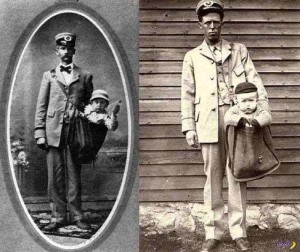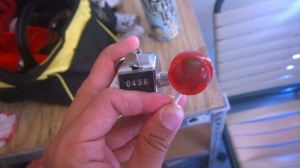
The World According to Facebook
Almost everyone has a Facebook account. It’s ubiquitous among teenagers and professionals alike. Hundreds of thousands of companies around the world try to market their products through the popular social-networking website. And while its nice to laugh at videos of babies or sweet kittens, Facebook is also a source of interesting information.
Here are just a few of the fun things we at English Matters have learnt over the past week!
Posting babies
Sending babies by US Post was not illegal in 1913 America. Children would have stamps attached to their clothes and sent on their way. They would be accompanied by postal workers as they rode trains to their destinations. It apparently cost fifty-three cents to send one baby girl to her grandparents for a family visit, one newspaper reported. As the practice became more commonplace, and after pictures like these started circulating, the law was changed making the practice illegal. It is unknown if any children were ever sent to the wrong address. (via Saving Lincoln Facebook page)
Before and After

D-Day veterans sitting in the plane which dropped them over Normandy 50 years ago (via Do Something Facebook page)
Last week marked the 50th anniversary of D-Day, when Allied troops landed in Normandy in a surprise attack on Nazi-controlled France. The invasion on the 6th of June, 1944, is still considered to be the largest seaborn attack in history, with 24,000 British, US, and Canadian troops landing shortly after midnight. The iconic Omaha beach scene in Spielberg’s Saving Private Ryan film is perhaps the closest any of us will ever come to experiencing the events of the day. However several of the soldiers who took part in that fateful attack are still alive today, and participated in last week’s anniversary commemorations. The picture on the left shows some of the veterans posing in the same plane which dropped them on enemy soil fifty years previously. (via Do Something Facebook page)
The Science of Licking
People like sucking on lollipops so much that the pastime could be considered an Olympic sport. But what is the best way of going about it? Some clever fellow decided to put his scientific temperament to the test, and find out exactly how many licks it takes to get to the centre of a lollipop. Armed with a tally counter, he (or she) found that it takes exactly 436 licks to completely get rid of the sugary coating of the lollipop. Not everyone was impressed with the methodology, however. One user commented that “It depends on if you suck, or if you lick, how long your licks are, and how much saliva you have on your tongue. So I don’t think there’s a one definitive answer.” (via Wimp.com Facebook page)
Did you know? That the popular brand Chupa Chups comes from the Spanish verb “chupar”, which means “to suck.” While the flower logo found on the candy today was designed by none other than Surrealist painter Salvador Dali.

